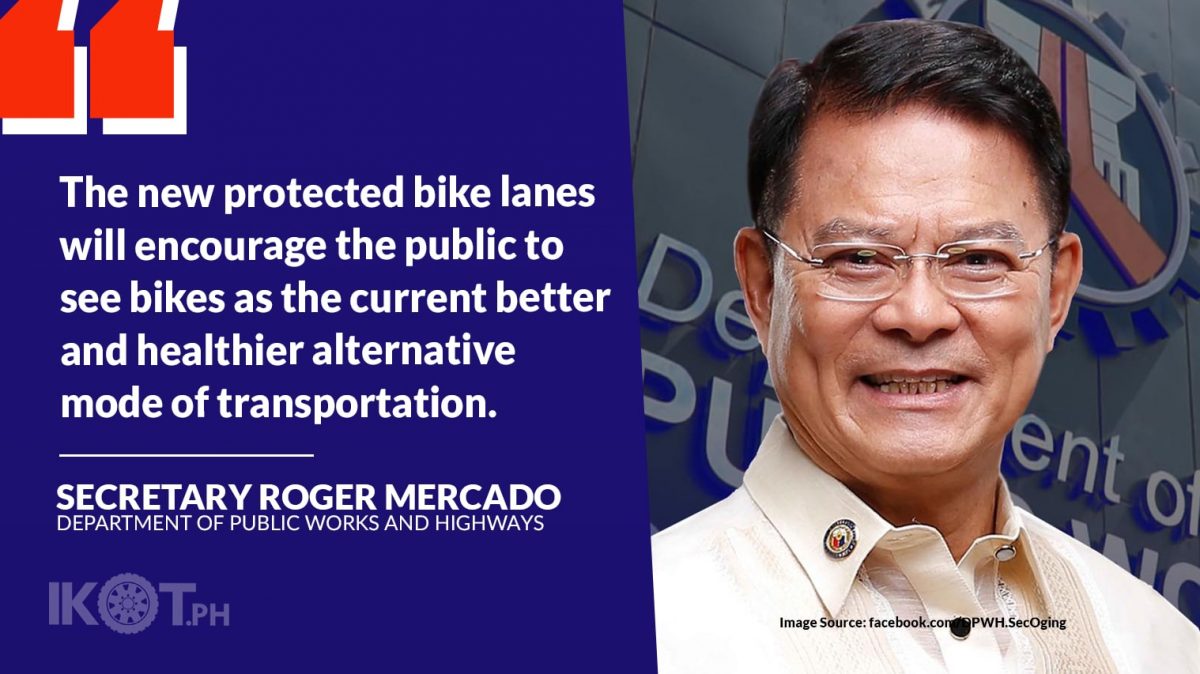The Department of Public Works and Highways (DPWH), together with the Department of Transportation (DOTr), officially launched the additional improved bike lanes in the cities of Marikina, Parañaque, Muntinlupa, and Las Piñas.
DPWH Secretary Roger Mercado and Transportation Secretary Art Tugade, represented by DPWH National Capital Region Director Nomer Abel Canlas and DOTr Undersecretary Mark Steven Pastor, respectively, led the inauguration of the total 66.10-kilometer South and East Metro Manila Bike Lane Network.
The East or Marikina Bike Lane Network has an overall length of 17.20 kilometers, covering the 8.72-kilometer General Ordoñez Avenue, the 1.90-kilometer Liwasang Kalayaan, the 3.92-kilometer J. Molina, Scarlet, and Russet Streets, and the 2.64-kilometer Park Creek, from St. Vincent Hospital to Marikina Rehabilitation Center.
While the 48.90-kilometer South Manila Bike Lane Network covers the 16.87-kilometer Quirino Avenue to San Antonio Avenue via NAIA Road, Ninoy Aquino Road and Parañaque-Sucat Road in Parañaque, the 21.83-kilometer Carlos P. Garcia Ext. to Bridgeway Avenue/ North Bridgeway via Diego Cera Avenue and Alabang-Zapote Road in Muntinlupa, and the 10.20-kilometer Investment Drive to Portofino Heights via Daang Hari Road in Las Piñas.
Reflectorized thermoplastic pavement markings, bike lane separators, bike racks, and road signages were installed.
Both bicycle lane facilities are classified as Class 3 or Shared Roadway, where part of the roadway is designated and marked as a bicycle route and may be shared with motor vehicles.
Also present in the event were DOTr Undersecretary Giovanni Lopez, LTFRB Chairman Atty. Martin Delgra III, DPWH Metro Manila 1st DEO Assistant District Engineer Lamberto De Leon, and other local officials and agency partners.
“The completed project connects to the existing 313-km Metro Manila Bike Lane Network.”
“The completed project connecting to the existing 313-km Metro Manila Bike Lane Network,” Mercado explained, “is part of the DPWH-DOTr’s strong commitment in promoting active and environmentally sustainable transportation in the country.”
“With the increasing fuel prices, the new protected bike lanes will provide the cyclists safe, available, shared road space.”
“With the increasing fuel prices, the new protected bike lanes will not just provide the cyclists safe, available, shared road space but also encourage the public to see bikes as the current better and healthier alternative mode of transportation,” the public works chief concluded.


